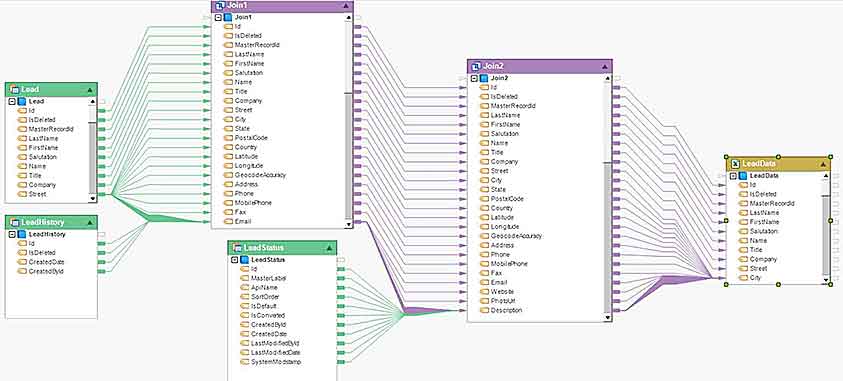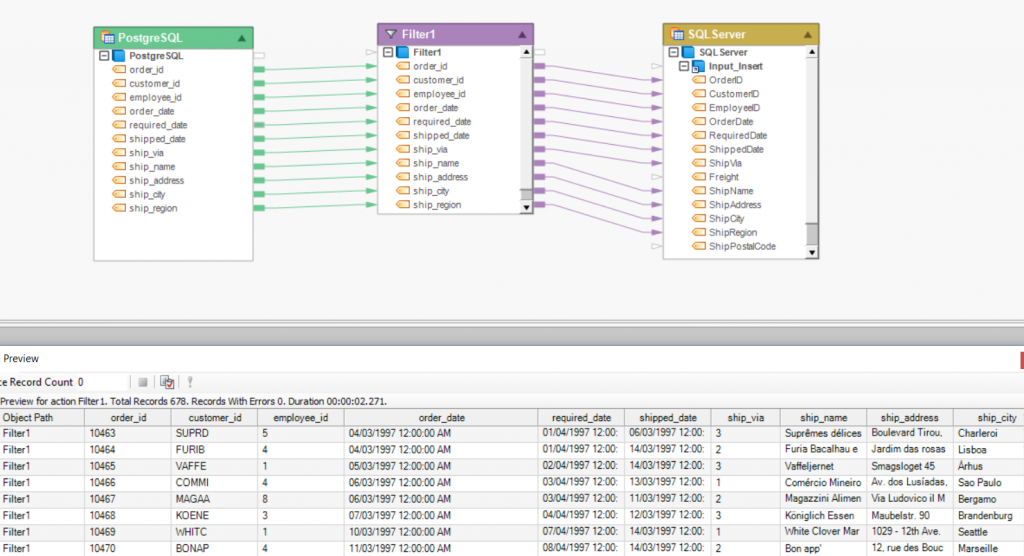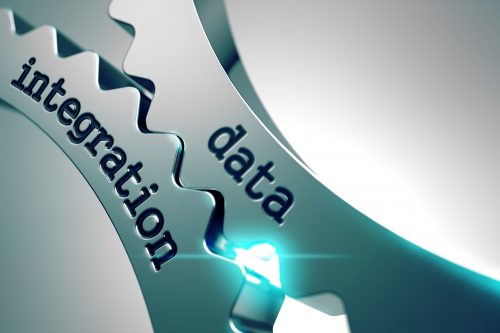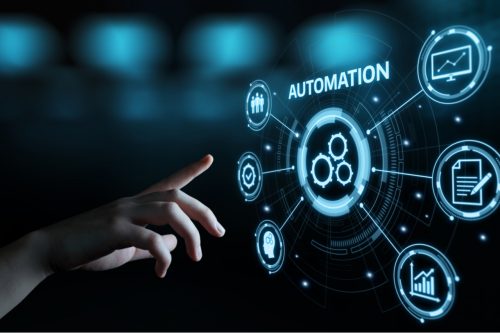Data mapping is crucial to the success of every data process. One mistake in data mapping can ripple throughout your business, leading to replicated errors, and ultimately, to inaccurate analysis.
For processes like data integration, data migration, or other data management projects, effectiveness in data mapping will determine the quality of the data that you analyze for insights.
Even though data mapping offers numerous business benefits, it is also a central part of the General Data Protection Regulation (GDPR) compliance. In this article, you’ll learn the concept of data mapping and how it helps you abide by GDPR compliance in ETL.

Astera Centerprise Data mapping software in action. Source: Astera
What is Data Mapping?
Data mapping is the process of identifying how one data set relates, or maps, to another. For example, suppose there’s one data set that includes a list of people and their contact info. This list contains the name, address, city, state, and zip or postal code for each person.
Also, consider a second data set that includes a list of people and their music preferences. This list includes the listener’s name, artist’s name, album name, and song name for each listener. Both these lists are self-contained, a bit related as they both include the particulars of people, but distinct.
Suppose that you wanted to create a mailing list of people who like a particular artist. You can’t easily get this information because there’s no direct way to relate one data set to the other. The solution is to create a mapping between the name in the first data set and the listener in the second data set.
This relationship is called a data map. Using this map, you can simply search the related or combined data set for all listeners in the list that like that particular artist. This gives you the corresponding mailing addresses.
What is GDPR Data Mapping? How to Comply with It?
GDPR is all about updating existing systems and implementing new ones to ensure the safekeeping and fair treatment of the user data you handle.
Not only is data mapping essential for carrying out the overall aims of the GDPR, but it’s also directly mandated by multiple articles of the regulation including:
Article 30 – GDPR article on Data mapping provides a written record, which you can easily retrieve and present at the time of the GDPR audit.
Article 25 – Data mapping helps you display your commitment to data privacy.
Article 6 – Data mapping helps you show the basis of processing –personal or sensitive.
Article 28 – Data mapping allows GDPR auditors to comprehend the extent of 3rd party access to organizational data.
Article 35 – Data mapping enables business enterprises to satisfy Data Protection Impact Assessment (DPIA) effectively.
GDPR Data Mapping Examples
There’s no one-size-fits-all format or process for GDPR data mapping. They can come in all different forms, through different means of execution, and in a wide range of sizes and depth.
Some data mapping programs are more technically-advanced, as the one shown below. They also offer GDPR data mapping templates so that users can easily validate data themselves.

Source: Solutions Review
Others are more user-friendly that don’t require a wealth of technical know-how to operate, like this example:

Source: Astera Centerprise
How GDPR Data flow Mapping Tools Help Compliance
An efficient GDPR data flow mapping software can help you easily comply with current data standards using template based data validation structure. A few ways these tools help include:
Identifying and Mapping Personal Data
Advanced data mapping software uses metadata that creates effective data maps, answering questions about the data origin, type of data collected, data subjects involved in the process, service level agreements, etc. These tools allow you to maintain, manage, and monitor data maps for business efficiency and GDPR compliance.
Ensuring Data Security
Data mapping software has security features that enable you to secure your database while providing access to data, whenever needed. They also allow you to conduct a risk analysis of your data and ensure adherence to Data Protection Impact Assessment (DPIA).
Assuring Better Control
An efficient data mapping software helps ensure data protection while handling personal data by providing role-based authorizations and granular data access rules.You can even modify your application by updating maps to establish control, as well as safeguard personal data effectively.
Free Resources & Templates for GDPR Data Mapping
Here are the top four resources and templates that integration teams can use to ensure GDPR dataflow compliance during ETL jobs:
EU GDPR Compliance Guide
The EU GDPR compliance document offers a detailed guide, including checklists and downloadable documentation templates for both data processors and data controllers that any data integration team can read to understand and improve data privacy rules.
GDPR Official Document
The best source you can get to learn about GDPR is the official guide. It provides some helpful guidelines on data mapping, along with other relevant material that can help you ensure data quality rules in your ETL processes.
European Commission (EC) GDPR Rules
Learn about how you can implement GDPR compliance rules in your organization with this official report from EC. EC offers comprehensive guidelines on data security and protection specific to each industry.
Conclusion
Attaining GDPR data flow mapping compliance is not easy. Yet, you can easily address it at numerous stages and it’ll help your enterprise follow privacy standards while efficiently fulfilling customer demands. You can leverage data mapping software like Astera Centerprise that includes advanced ETL data mapping tools to create effective data maps, stay compliant, and, above all, drive your business forward.







